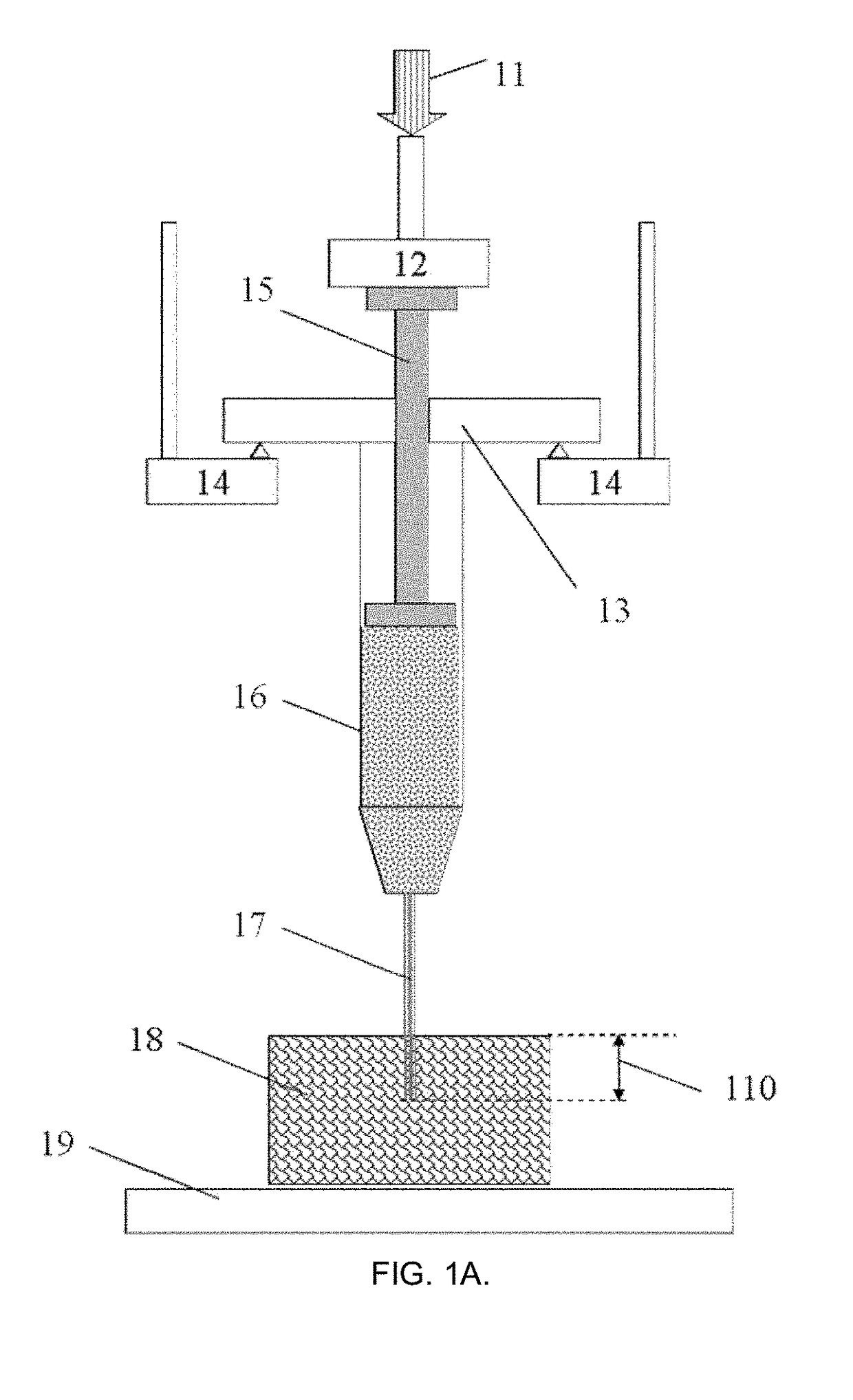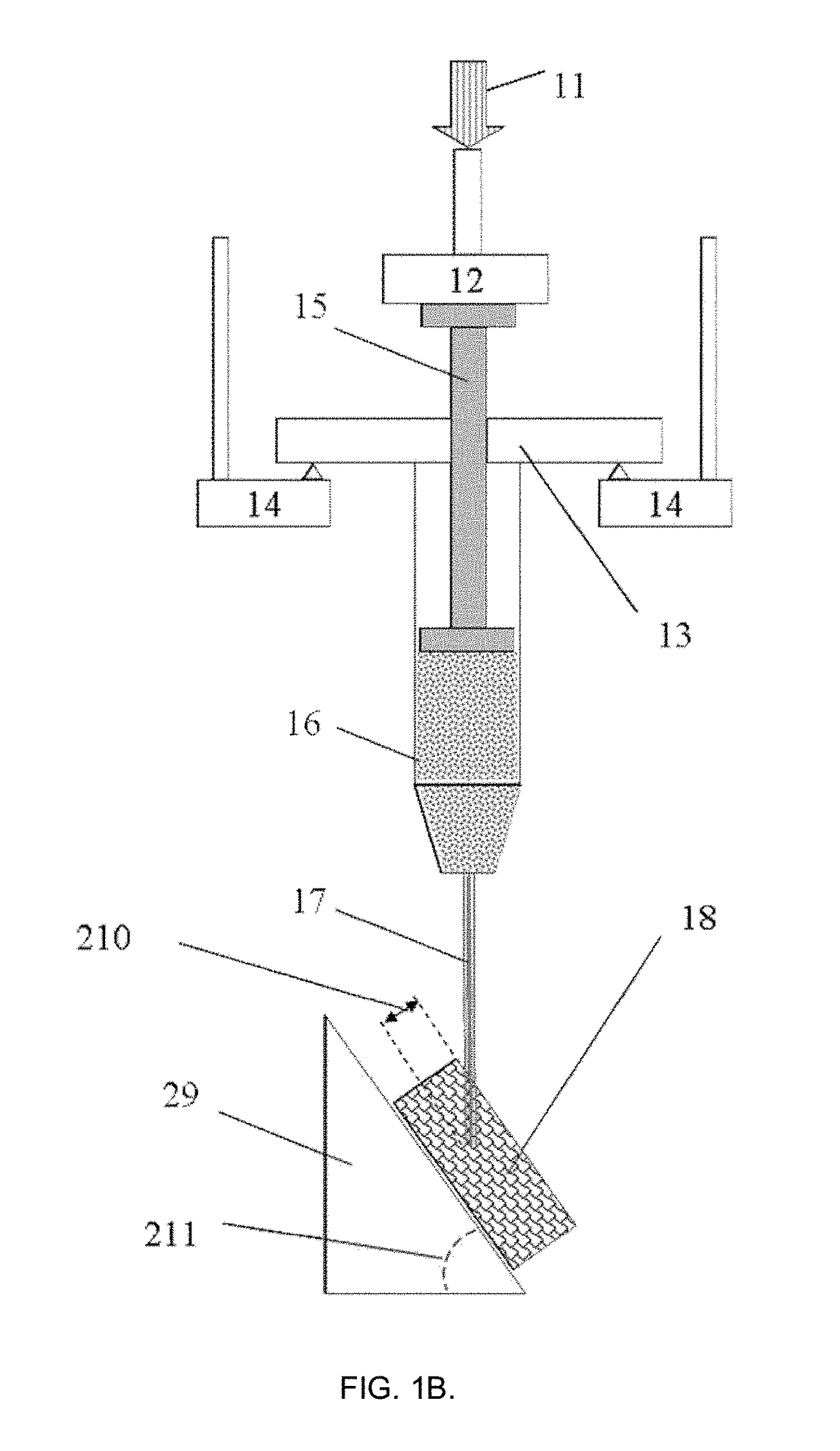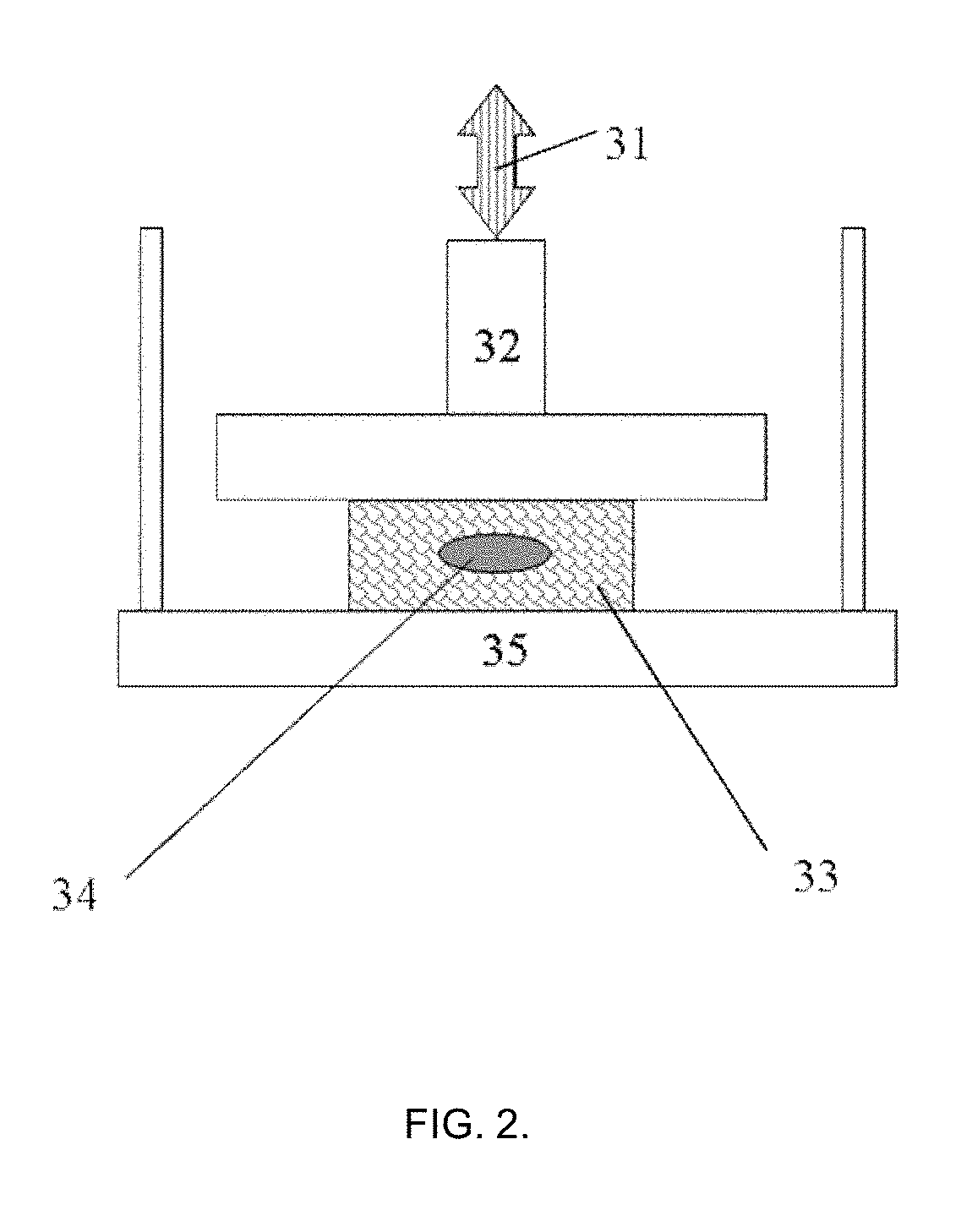Method for measurement and model-free evaluation of injectable biomaterials properties
a biomaterial and model-free technology, applied in the field of new methods of testing injectable materials, can solve problems such as pain, local perturbation of tissue, damage to organs or somatic systems,
- Summary
- Abstract
- Description
- Claims
- Application Information
AI Technical Summary
Benefits of technology
Problems solved by technology
Method used
Image
Examples
example 1
[0092]According to this example, a 1 mL capacity Fortuna® Optima® glass syringe (Poulten & Graf GmbH, Wertheim, Germany) was filled with acrylate polymer-based hydrogel fluid used for disinfection as a model injectable biomaterial of sufficiently high viscosity (GOJO Industries Inc., Akron, Ohio, USA). The syringe was attached with a sterile 26G1 / 2 size PrecisionGlide® hypodermal needle (Becton Dickinson & Co., Franklin Lakes, N.J., USA) internal needle diameter 0.260 mm) and located at the fixed support according to FIG. 1A in the customized sample holder connected to the dynamic mechanical analyzer DMA242C (Netzsch Gerätebau GmbH, Selb, Germany). The needle was inserted on ˜1 mm depth at the right angle into a commercial skin tissue phantom (Simskin LLC, Chicago, Ill., USA), comprising of several layers mimicking epidermis, dermis, hypodermis and fat layers. Tests were carried out at 25±1° C. and normal atmospheric pressure in air.
[0093]The test began with moving the probe-sensor ...
example 2
[0099]The tissue phantom with injected 50±10 μL of the test material as shown in Example 1 was further tested on its biomechanical properties in the manner depicted in FIG. 2. The tissue phantom specimen with external dimensions (l×w×h) (11±0.5)×(12±0.5)×(6.5±0.3) mm was positioned on the sample holder plate and brought into the contact with the probe sensor of 15 mm diameter using compression mode sample holder. The precise size of the tissue phantom specimen was measured with non-contact optical method (±0.5 μm) with laser micrometer (Metralight Inc., CA, USA). The measurements were done before injection and after injection to check that no apparent significant variations (such as specimen twisting or buckling) are present. The other essential details of this measurement and theoretical description are also presented in the non-provisional U.S. patent application Ser. No. 15 / 655,331 of 20 Jul. 2017.
[0100]After letting the probe to establish the contact with the specimen and taring...
example 3
[0107]In this example, the injectability of the hydrogel material was measured in a similar way to Example 1 but with the purpose to obtain values needed to get constant injection rate. It is anticipated that for maximal patient comfort the injection rate should be kept as constant as possible (minimizing injection pain). This is difficult to achieve with manual syringe or an automated injection gun where injection force (pressure) is set up initially.
[0108]The tests were made using DMA242E “Artemis” (Netzsch Gerätebau GmbH, Germany) customized by the applicant. The tests were done at 22±1° C. and RH 25% in a climate-control room under laminar flow cabinet of ISO Class 5 (USP compliant). Plastic syringes (Galderma AB, Sweden) syringes of 1 mL capacity (as used for Restylan® Skin Booster dermal filler) were thoroughly washed several times with deionized water, dried and cleaned from any residual matter and connected with sterile needles 29G×½″. Acrylic hydrophilic gel (Gojo Industrie...
PUM
 Login to View More
Login to View More Abstract
Description
Claims
Application Information
 Login to View More
Login to View More - R&D
- Intellectual Property
- Life Sciences
- Materials
- Tech Scout
- Unparalleled Data Quality
- Higher Quality Content
- 60% Fewer Hallucinations
Browse by: Latest US Patents, China's latest patents, Technical Efficacy Thesaurus, Application Domain, Technology Topic, Popular Technical Reports.
© 2025 PatSnap. All rights reserved.Legal|Privacy policy|Modern Slavery Act Transparency Statement|Sitemap|About US| Contact US: help@patsnap.com



